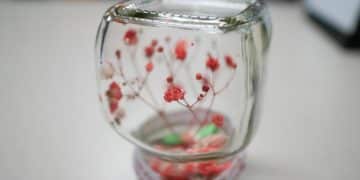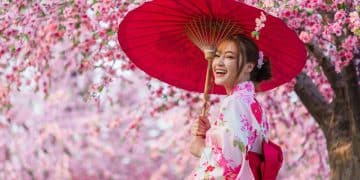Japanese Pharmacy Shopping: US Traveler’s OTC Guide

Exploring Japanese Pharmacy Shopping can feel both exciting and overwhelming for US travelers.
Amid shelves filled with colorful packaging and unfamiliar labels, finding the right over-the-counter remedy may seem daunting at first. Yet, with the right guidance, these stores transform into gateways to effective and innovative healthcare solutions.
A trip to Japan is full of unforgettable experiences, but minor health concerns can still arise along the way.
From soothing cold symptoms to easing travel fatigue, understanding how to navigate local pharmacies ensures that your journey stays comfortable and worry-free.
This guide is designed to give US visitors the confidence to make informed choices, uncovering everything from popular remedies to essential label tips.
Understanding the Japanese Pharmacy Landscape
Japanese pharmacies, or “drugstores” (ドラッグストア – doraggu sutoa), are ubiquitous, ranging from small, traditional establishments to large, modern superstores.
Unlike the more homogeneous American pharmacy chains, Japanese drugstores often carry a wider variety of non-medicinal products, including cosmetics, sundries, and even some food items. This can be both a blessing and a challenge for the uninitiated traveler.
Knowing what to expect and how these stores are organized is the first step to successful over-the-counter (OTC) medication shopping.
These pharmacies are typically well-lit, clean, and offer a generally pleasant shopping experience.
While not all staff may speak English proficiently, many will try their best to assist, and visual cues, product packaging, and translation apps can bridge communication gaps effectively.
The sheer volume of products available, however, can be overwhelming. From innovative cooling patches to unique pain relievers, the selection reflects Japan’s advanced approach to self-care.
Types of Japanese Drugstores and What They Offer
When it comes to Japanese Pharmacy Shopping, travelers will find different types of places to meet their needs.
Large drugstore chains such as Matsumoto Kiyoshi or Daikoku Drug resemble CVS or Walgreens in the US, with wide aisles of medicines, cosmetics, toiletries, and even daily essentials, often located in busy stations and shopping districts.
In contrast, smaller independent pharmacies may not carry as many options but often provide more personalized guidance, especially valuable if you can communicate in Japanese, and they are frequently found in residential neighborhoods.
For the most basic items, like plasters, eye drops, or simple stomach relief, convenience stores such as 7-Eleven, Lawson, and FamilyMart also stock a small range of over-the-counter products, making them a quick and accessible option for travelers.
Each type of establishment caters to different needs, but the larger chains will generally be your go-to for a comprehensive range of OTC medicines.
They consolidate multiple product categories, making them a one-stop shop for travelers seeking relief from various common ailments. Their prevalence also means you’re rarely far from one in urban centers.
Navigating the aisles requires a keen eye for product types and an understanding of general categories. Pain relievers, cold and flu medications, digestive aids, and topical treatments are usually grouped together.
While some packaging may feature English translations, it’s wise to be prepared with key Japanese terms for common symptoms or medication types to facilitate your search. This initial familiarity sets the foundation for a more confident shopping experience.
Navigating Common Ailments: What to Look For
When an unexpected ailment strikes, knowing exactly what to ask for or look for can save significant time and discomfort. Japanese OTC medications are often highly specialized, with products designed for very specific symptoms.
This contrasts with some Western medications that are broad-spectrum, treating multiple symptoms simultaneously. Understanding these distinctions is crucial for finding the right relief.
For US travelers, symptoms like headaches, colds, upset stomachs, or minor injuries are commonly encountered. Japanese pharmacies excel in offering a diverse array of solutions for these issues.
From effective pain relief to innovative cold remedies, the options are plentiful. However, decoding the specific product attributes requires some foundational knowledge.
Headaches and Pain Relief (鎮痛剤 – Chintsūzai)
Japanese pain relievers are very effective. Look for brands like “Bufferin,” “Eve,” or “Loxonin.” These often contain ibuprofen, aspirin, or loxoprofen sodium, a potent non-steroidal anti-inflammatory drug (NSAID) popular in Japan.
They come in various strengths and formulations, including quick-dissolving tablets.
- Eve (イブ): A popular choice containing ibuprofen, often combined with an ingredient to protect the stomach. Various sub-types (e.g., Eve Quick for fast relief).
- Bufferin (バファリン): Often contains aspirin or acetaminophen, with formulations for various types of pain. Many include a stomach protectant.
- Loxonin S (ロキソニンS): Contains loxoprofen sodium, a strong NSAID. Available in tablets and often recommended for acute pain.
When selecting a pain reliever, consider the type of pain and any pre-existing conditions, particularly stomach sensitivity.
Many Japanese pain medications are formulated to be gentler on the stomach, which can be a significant advantage for travelers prone to gastric distress.
Read the dosage instructions carefully, as they may differ from what you are accustomed to.
It’s worth noting that some Japanese pain medications might have slightly different active ingredients or combinations than their US counterparts. Familiarize yourself with common Japanese brand names and their primary components to make an informed choice.
The packaging, while often in Japanese, usually highlights the main active ingredient in English or Romanized Japanese.
Cold and Flu Symptoms (風邪薬 – Kazegusuri)
Japanese cold and flu remedies are diverse and often very effective. They come in various formats, including lozenges, powders, and tablets.
Medications like “Pabron Gold” or “Lulu Attack” are popular, containing combinations of antitussives, expectorants, antihistamines, and fever reducers. Look out for “throat lozenges” (のど飴 – nodo ame) and “nasal sprays” (点鼻薬 – tenbiyaku).
- Pabron Gold A (パブロンゴールドA): A very common multi-symptom cold medicine.
- Lulu Attack EX (ルルアタックEX): Another popular brand for comprehensive cold and flu relief.
- Nasal Decongestants (鼻炎薬 – Bienyaku): Specifically for stuffy noses, often containing pseudoephedrine alternatives.
Japanese cold medicines often focus on specific symptom relief. Some are designed primarily for coughs, others for nasal congestion, and still others for fever and body aches. Consider your primary symptoms when choosing.
Some unique Japanese cold remedies include “kakkonto” (葛根湯), a traditional herbal medicine often used at the onset of a cold. While many products are combination remedies, you might find more targeted options if one symptom is particularly bothersome.
Consider also the presentation of these medicines; some come in convenient single-dose powders that can be easily dissolved in water, providing quick relief on the go.
Cough drops and throat sprays are also widely available and effective for soothing irritated throats. Always check the active ingredients and dosage to ensure they align with your health needs and any known allergies.
Digestive Issues (胃腸薬 – Inchōyaku)
Stomach upset from new foods or travel stress is common. Japanese pharmacies offer solutions for indigestion, heartburn, and diarrhea. “Ohta’s Isan” is a well-known powder for indigestion, while “Seirogan Toi-A” is popular for diarrhea. Look for enzymes, antacids, or probiotics.
- Ohta’s Isan (太田胃散): A powdered digestive aid for indigestion and overeating.
- Seirogan Toi-A (正露丸糖衣A): For diarrhea, often with a distinct smell, but very effective.
- Cabagin Kowa (キャベジンコーワ): For stomach discomfort, often containing cabbage extract to promote healthy stomach lining.
Japanese remedies for digestive issues often focus on supporting the stomach and intestine’s natural functions. Many products incorporate traditional herbal ingredients alongside Western pharmaceutical compounds.
If you experience heartburn, look for antacids that neutralize stomach acid efficiently. For general stomach upset, products containing digestive enzymes can be particularly helpful after indulging in rich Japanese cuisine.
It’s often recommended to start with a gentle remedy and escalate only if necessary.
Probiotics (乳酸菌 – nyu-sankin) are also widely available and can be beneficial for maintaining gut health during travel.
Be aware of the distinction between remedies for indigestion (often enzyme-based) and those for diarrhea or constipation, as their active ingredients and mechanisms of action will differ significantly.
Always follow the recommended dosage on the packaging, as Japanese OTC doses might vary from US norms.
Topical Treatments and First Aid (外用薬 – Gaiyōyaku & 応急処置 – Ōkyū Shochi)
For minor cuts, scrapes, muscle aches, or skin irritations, Japanese pharmacies have an impressive array of topical solutions. You’ll find everything from antiseptic creams and bandages to specialized muscle relief patches and insect bite remedies.
These items are typically well-organized within the store, often near the main checkout or in dedicated first-aid sections.
Popular items include cooling patches for muscle pain or fever, and highly effective insect bite creams that soothe itching quickly. “Salonpas” patches are globally recognized and widely available for muscle pain.
For minor wounds, look for antiseptic solutions and a variety of bandages, including waterproof and transparent types. Japanese wound care often includes very thin, flexible plasters (絆創膏 – bansōkō) that adhere well, even to difficult areas, and some even incorporate pain relief or healing agents.
- Salonpas (サロンパス): Medicated patches for muscle aches and pains. Available in various sizes and strengths.
- Cooling Sheets (冷却シート – Reikyaku Shīto): For fever or muscle soreness, these adhesive gel sheets provide a refreshing sensation.
- Mopidick (ムヒ – Muhi): A very popular and effective cream for insect bites, known for its strong anti-itch properties.
- Liquid Bandages (液体絆創膏 – Ekitai Bansōkō): A unique Japanese product that forms a sealed, waterproof layer over small cuts, especially useful on fingers or joints.
When dealing with topical treatments, pay attention to the specific claim on the packaging (e.g., pain relief, anti-itch, antiseptic). For muscle aches, both cooling and warming patches are available, each suited for different types of discomfort.
Cooling patches are often preferred for acute injuries or inflammation, while warming patches are good for chronic stiffness. Consider bringing your preferred brand of mild antiseptic wipes from home, although good quality ones are available in Japan.
For skin irritations or allergic reactions, look for steroid creams (ステロイド – suteroido) or antihistamine creams (抗ヒスタミン薬 – kō-hisutamin-yaku).
Sunscreen, which is a critical item given Japan’s often intense sun, is also widely available and comes in many very light, non-greasy formulations that are highly regarded.
Remember to check expiration dates and storage instructions for all topical products, especially if you plan to carry them around in varying temperatures.
Reading Labels and Understanding Key Information
One of the greatest challenges in Japanese Pharmacy Shopping for US travelers is the language barrier.
Most neighborhood pharmacies and drugstores display information exclusively in Japanese, and while larger chains in tourist areas may provide limited English support, it is not something to rely on.
This makes learning to interpret packaging symbols, numbers, and key phrases an essential skill to navigate the shelves with confidence.
Japanese product packaging is designed to be highly visual, often using icons or illustrations to communicate the purpose of the medicine. A drawing of a head may indicate headache relief, while a stomach image points to digestive remedies, and a nose may symbolize cold or allergy treatments.
Dosage instructions are also usually presented clearly with pictograms that distinguish between adults, children, and the number of tablets or drops required, making it possible to follow directions even without full fluency in the language.
Understanding the concept of “quasi-drugs” is equally important. These items, known as 医薬部外品 (iyaku-bugaihin), fall between cosmetics and pharmaceuticals. They may offer preventive or supportive health benefits but are not as tightly regulated as actual medications.
Recognizing whether a product is a full pharmaceutical or a quasi-drug helps travelers know whether they are purchasing something for treatment or general wellness support.
This awareness can make the difference between getting effective relief and buying something less targeted to your needs.
Utilizing Technology for Translation
Technology is one of the most valuable allies when navigating Japanese Pharmacy Shopping. The Google Translate app is particularly effective thanks to its camera function, which allows you to point your phone at Japanese text and instantly see an English overlay.
This tool makes it easier to identify active ingredients, dosage instructions, and warnings, even if the translations are not always perfect.
Beyond apps, picture dictionaries or phrasebooks with essential medical terms can be extremely helpful. Knowing how to say or show symptoms like “fever,” “allergy,” or “stomachache” in Japanese can make interactions with pharmacy staff much smoother.
Even in smaller, independent stores where English is rare, pharmacists are often willing to help if you can express your needs clearly with basic phrases or written notes.
When relying on translation apps, focus on the most important details: look for terms connected to dosage, side effects, and active ingredients. Numbers are easy to recognize and are critical for understanding how many pills to take and how often.
Packaging often includes key age indicators such as 成人 (seijin – adult) and 小児 (shōni – child), which are useful for identifying appropriate dosage by age group.
Combined with the visual design of the boxes, bright colors for cold remedies, anatomical images for pain relief, or specific symbols for digestive aids, this makes the shopping experience much more manageable, even without fluency in Japanese.
Regulatory Differences and Safety Tips for US Travelers
When engaging in Japanese Pharmacy Shopping, it is essential for US travelers to understand that Japan has its own strict pharmaceutical regulations, which do not always mirror those of the US Food and Drug Administration (FDA).
This means that the availability and dosage of certain over-the-counter medications can differ significantly. For example, some ingredients requiring a prescription in the United States may be sold freely in Japan, while other common US medications may be restricted or classified differently.
Such discrepancies highlight the importance of caution, especially for travelers with pre-existing health conditions or those taking prescription medications.
Carrying a list of your current prescriptions, over-the-counter medicines, and any known allergies is one of the smartest steps before shopping in Japan.
This information becomes particularly useful when comparing ingredients on Japanese packaging, which can often be confirmed with the assistance of a pharmacist or a reliable translation tool.
It is also vital not to assume that familiar global brands carry identical formulas in both countries.
A medication with the same brand name may contain different active ingredients or concentrations depending on local regulations, which could lead to unintended effects if not carefully checked.
Key Safety Reminders
To ensure safety while navigating pharmacies, US travelers should develop the habit of closely examining active ingredients, dosages, and potential interactions.
Japanese labels may present dosages that are lower or higher than expected, making it crucial to understand exactly how often and in what quantity the product should be taken.
If you are already using prescription medications, considering possible interactions with over-the-counter options is essential, as even mild remedies can alter the effectiveness of other treatments.
Allergies are another factor to watch carefully, as some Japanese products may contain compounds such as lactose or specific additives uncommon in US equivalents.
It is generally advisable to begin with the lowest effective dose of any new medication when shopping in Japan, as this allows your body to adjust while reducing the risk of side effects.
Travelers should also pay attention to how medications may impact their journey, for instance, antihistamines and cold medicines might cause drowsiness, making them unsuitable for driving or sightseeing.
Japanese pharmacies typically include detailed product inserts, but these are almost always written exclusively in Japanese, reinforcing the need for translation apps or assistance.
Finally, bringing along a small first-aid kit from the US with familiar remedies for minor issues, such as pain relievers or bandages, can minimize stress and ensure you are prepared for everyday needs.
This allows you to rely on Japanese OTC options primarily for specific ailments or to explore unique local products known for their effectiveness.
While Japanese Pharmacy Shopping offers a wide range of safe and innovative solutions, it is crucial to approach the experience responsibly, balancing curiosity with informed caution in an unfamiliar regulatory environment.
Beyond Medication: Health and Wellness Products
Japanese pharmacies are not just about sickness; they are hubs for health, beauty, and wellness. Beyond OTC medications, you’ll discover a fascinating array of products that cater to general well-being, preventative care, and unique self-care routines.
Exploring these sections can be an exciting part of your Japanese shopping experience, offering insights into local health philosophies and innovative product development.
Many drugstores dedicate significant space to cosmetics, skincare, hair care, and even nutritional supplements. You’ll find popular Japanese brands known for their quality and efficacy, often at competitive prices compared to what you might pay in the US.
These sections are particularly popular with travelers looking for unique souvenirs or to stock up on beloved Japanese beauty items. From highly-rated sunscreens to hydrating sheet masks, the selection is vast and tempting.
Popular Wellness Categories
- Beauty and Skincare (美容・スキンケア – Biyō / Sukinkea): Wide range of cleansers, toners, lotions, essences, and sheet masks. Japanese skincare is highly regarded worldwide.
- Supplements (サプリメント – Sapuri-mento): Vitamins, minerals, collagen, and unique Japanese health supplements for various purposes (e.g., liver support, eye health).
- Oral Care (オーラルケア – Ōraru Kea): Specialised toothpastes, toothbrushes, and mouthwashes not commonly found in the US.
- Unique Health Aids: Items like cooling gel sheets, heat patches, ergonomic eye masks, and even foot care products designed for tired travelers.
When exploring these wellness aisles, even without comprehensive Japanese, the packaging often features recognizable terms or visual cues for products like “vitamin C,” “collagen,” or “hyaluronic acid.”
Many beauty products also have English names or clear English descriptive text. It’s a great opportunity to explore the famous Japanese meticulousness and innovation applied to daily health and beauty routines.
Consider looking at the various types of eye drops (目薬 – megusuri) available. Japanese eye drops are renowned for their cooling sensation and are often formulated to relieve eye fatigue from screens, dryness, or redness, going beyond basic lubrication.
There are also specific types for contact lens wearers. Similarly, the variety of dental care products, from compact brushes to whitening toothpastes, reflects a strong emphasis on oral hygiene.
This broader spectrum of health and wellness products highlights that Japanese pharmacies are truly holistic health destinations. They cater not just to curing ailments but to enhancing daily life and promoting preventive care.
Taking the time to browse these sections can lead to unexpected discoveries and practical items to ease your travels.
Preparing for Your Pharmacy Visit & What to Expect
When it comes to Japanese Pharmacy Shopping, preparation makes the entire process easier and less stressful. Unlike in the US, where staff may freely discuss products in English, language and cultural differences in Japan can create small barriers.
By preparing in advance, travelers can ensure they find the right remedies quickly without feeling overwhelmed.
Tips for a Smooth Pharmacy Experience
A good strategy starts before leaving your hotel: review your symptoms carefully, note them down in English and Japanese if possible, and bring any helpful tools like a translation app. This foresight turns what could feel like an intimidating errand into a smooth and efficient experience.
Being precise about your symptoms is essential. Instead of using broad terms such as “stomachache,” try to identify whether your issue is indigestion, diarrhea, or heartburn. Japanese pharmacies often categorize products very specifically, so this detail helps narrow down the correct section of the store.
Even a simple phrase in Japanese, such as “Atama ga itai desu” (私の頭が痛いです – My head hurts), can help staff immediately understand your need. Writing this down on a note card or keeping it ready on your phone can save time and reduce frustration if verbal communication is difficult.
Once you arrive at the pharmacy, expect an environment that is clean, organized, and divided by ailment type. Shelves are usually labeled with kanji such as 薬 (kusuri – drugs), 医薬品 (iyakuhin – medicine), or 健康 (kenkō – health).
Just as in US pharmacies, cold and flu treatments, pain relief, and digestive remedies are typically grouped together. Don’t hesitate to approach staff if you need assistance. Even if they do not speak fluent English, Japanese customer service is known for its politeness and willingness to help.
Pointing to the area of discomfort or using a translation app for basic terms can bridge the gap quickly.
Travelers should also remember small details that can make their visit smoother. Having your passport with you is a good precaution, even though it is rarely needed for over-the-counter purchases.
Patience is another key element, as interactions may take a little longer due to translation or clarification. Finally, ending the exchange with a polite “Arigatou gozaimasu” (ありがとうございます – thank you very much) is always appreciated and adds a touch of respect to the interaction.
With these habits, a trip to the pharmacy becomes less of a challenge and more of a cultural experience that adds to your overall journey in Japan.
| Key Point | Brief Description |
|---|---|
| 💊 Local Brands & Ingredients | Familiarize yourself with common Japanese OTC brands like Eve, Pabron, and Ohta’s Isan, and their active ingredients, which may differ from US equivalents. |
| 📲 Translation Tools | Use apps like Google Translate’s camera feature to understand labels, dosage, and warnings on packaging. |
| 🛍️ Diverse Offerings | Japanese drugstores sell not just medicines, but also cosmetics, health aids, and unique wellness products. |
| ⚠️ Safety Precautions | Always check active ingredients, dosage, and potential interactions, as regulations may differ from the US. |
Frequently Asked Questions About Japanese Pharmacy Shopping
While you might not find exact US brands like Tylenol (acetaminophen) or Advil (ibuprofen) on Japanese shelves under those names, similar active ingredients are widely available. Look for “Bufferin” or “Eve” for pain relief, which contain aspirin or ibuprofen, respectively. Acetaminophen is also common, though it might be under a different brand name. Always check the active ingredients on the packaging.
In major cities and tourist-heavy areas, you may find some pharmacists or staff who speak basic English. However, it’s not guaranteed. It’s advisable to have a translation app ready or a note with your symptoms written in Japanese. Most staff are very helpful and will try their best to assist, often using gestures or simple phrases to communicate.
Japan offers several distinct and effective OTC products. Examples include “liquid bandages” for small cuts, highly effective cooling eye drops, various types of heat or cooling patches for muscle pain, and innovative cold remedies like “Pabron Gold” that combine multiple symptom relievers. Many also love Japanese stomach medicines like Ohta’s Isan for indigestion or Cabagin Kowa for stomach discomfort, which often have unique formulations.
Most common remedies for minor ailments are available over-the-counter in Japan, similar to the US. However, some medications that might be OTC in the US could require a prescription in Japan, and vice versa. For example, stronger antihistamines or certain decongestants might have different classifications. Always check the packaging or ask staff if you are unsure about a specific medication’s availability without a prescription.
While most text is in Japanese, dosage instructions often use clear numbers and pictograms (e.g., an adult figure with “1錠” for one tablet, or numbers of times per day). Warnings are typically in a red box or distinct font; use a translation app to scan this text. Look for common terms like “成人” (adult), “小児” (child), and “服用” (take). Many packages also visually indicate the intended ailment.
Conclusion
Navigating Japanese pharmacies as a US traveler, while initially daunting due to language and regulatory differences, is an empowering experience that enhances your journey.
By understanding common ailments, familiarizing yourself with key Japanese brands and product types, and leveraging modern translation tools, you can confidently find effective relief for everyday health needs.
Beyond mere medication, exploring these drugstores offers a fascinating glimpse into Japan’s advanced approach to wellness and self-care.
With a little preparation and an open mind, you’ll discover that Japanese pharmacy shopping is not just a necessity, but another unique and rewarding aspect of your adventure in the Land of the Rising Sun.

